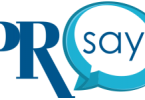Most public relations practitioners who are members of professional associations are likely familiar with industry codes of ethics; however, familiarity with codes does not imply that practitioners know what to do when faced with an ethical dilemma. In an academic study recently published in the Journal of Mass Media Ethics, my coauthor Dr. Minette Drumwright and I conducted in-depth interviews with 30 senior practitioners from 10 states in the U.S. and Australia, who had an average of 27 years of experience. We identified multiple techniques that anyone could use to raise red flags.
Practitioners’ Motivation
The practitioners we interviewed had several motivations for raising their concerns such as obligations to various publics, the belief that truth was the foundation of effective public relations, and their own personal reputation. As one practitioner said,
“I can’t afford to lose my credibility…As PR professionals, it’s all we have. And if I lose my credibility here, it’s not like [I] can just go start over with someone else, somewhere else. Credibility is something that you can’t afford to lose.”
The fact that they were often the “voice and face of the organization” made them realize their reputations were on the line, and from the public’s perception, intertwined with the organization’s behavior.
How to Raise Ethical Concerns
One of the most enlightening aspects of our study was when the practitioners discussed specific ethical dilemmas they faced and the ways they approached the CEO or president and other senior executives with their concerns. They were aware that they needed to be careful in the way they approached those who outranked them. The following are some of the more common
techniques:
- Use the Headline Test: Multiple practitioners discussed this approach, which involves asking senior management to envision the newspaper headline that could result from the organization’s action.
- “I’ll put [the headline test] to them if there is an issue. It’s like, ‘What do you want the story to be? What’s the good story that you can imagine and the bad story that you can imagine?’ I don’t have to explain it for them now. They can sit there and think about it.”
- Offer Viable Alternatives: Some practitioners would identify and provide senior executives multiple choices to consider as an alternative to the ethically problematic option. For one practitioner, this meant writing two versions of the same speech. One was the version he was asked to write by his boss and the other reflected the direction he believed was in the organization’s best interest.
- “(I) turned those back in and said please take a look at the second version, and the second version is what was done and that was after no other leadership discussion beyond just me offering that and then that’s what was done.”
- Assume the Role of Loyal Opposition/Devil’s Advocate: Others discussed how they would raise concerns from the perspective of key stakeholders rather than as their own personal perspective.
- “I would simply say, well, have you thought about how moms will react? Have you thought about how the financial supporters would react?”
- Find Case Studies: Another common approach was to pull lessons from news headlines that demonstrated both the good and bad that had resulted from other companies’ decisions:
- “When you pick up a newspaper or turn on cable news there’s always examples of mistakes companies are making, because they are either trying to not disclose something or hide something. There’s always lots of case studies out there to cite. Just what the lawyers do – lawyers argue cases based on prior cases and I use the same kind of tactics.”
- Recruit Allies: When practitioners did not have access or influence among senior management, they found allies who did and convinced them of the merits of their position.
- “I also figured out very quickly that another person on our staff, another senior member, did have his ear and …confidence. And so what I learned to do was when I wanted to get an issue floated and get approval for it was use this other person to go through… I could still get my job done letting somebody else take the ball, get the credit for it.”
Other approaches included conducting research to support their recommendations, and one practitioner even staged a mock news conference to demonstrate why it was a bad idea to use an uninformed spokesperson to dodge questions from the media.
Personal Preparation
The senior practitioners identified several resources that prepared them to provide ethics counsel including professional develop programs such as webinars and conferences, advanced degrees and Accreditation. As one practitioner said,
“I don’t want to say because I’m Accredited I’m an ethical strategic professional, but I think that the process of Accreditation – going back to the idea of ethics often times being paired with something else…whether there’s evaluation or research… Accreditation was one of those things in my professional career that helped me connect the dots between those more readily.”
Others discussed the importance of mentors and a network of colleagues with whom they could discuss issues and identify solutions. Do you feel prepared to provide ethics counsel? If not, consider following the advice of these senior practitioners.
Marlene Neill, Ph.D., APR is a lecturer at Baylor University







I agree that one’s reputation is very important in the world of public relations. As a public relations professional, it is a ton of pressure to always say the “right” things. The media will completely bash someone if they sound ignorant or rude to a certain situation.
[…] apparent in the future of ethics. It is the responsibility of industry leaders and their employers to inspire and facilitate discussion. Currently, this is being done through Twitter chats and online […]